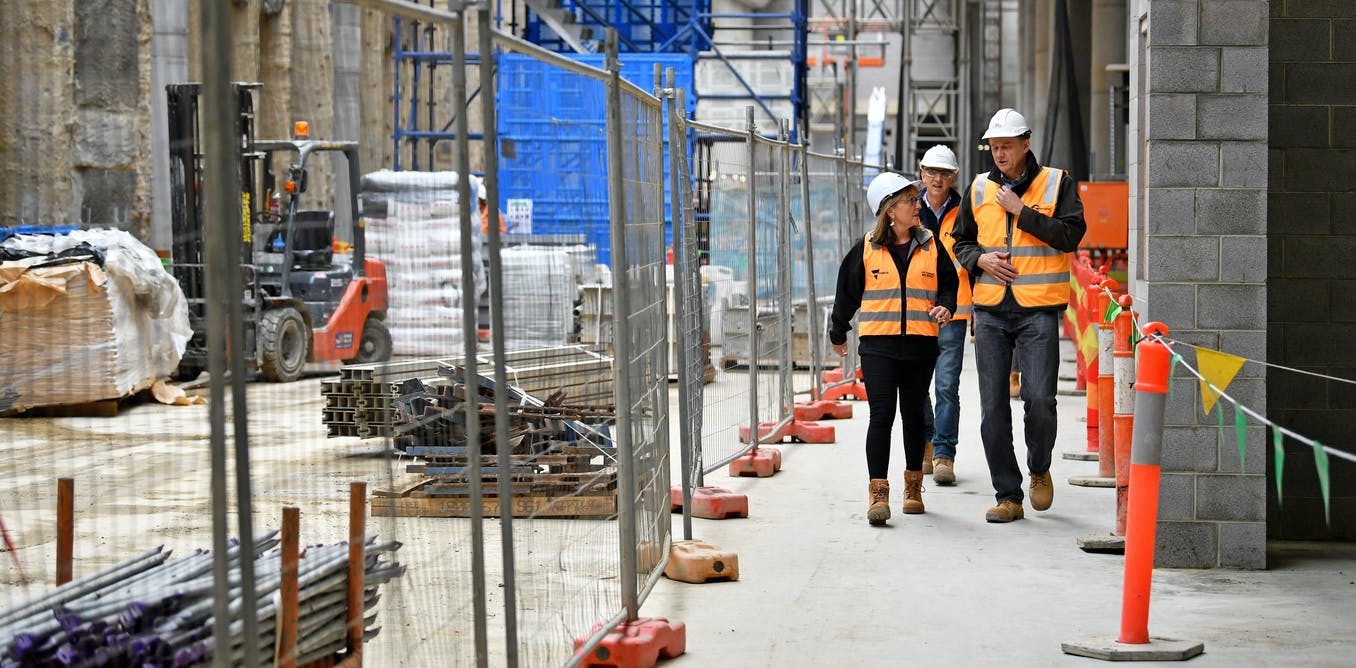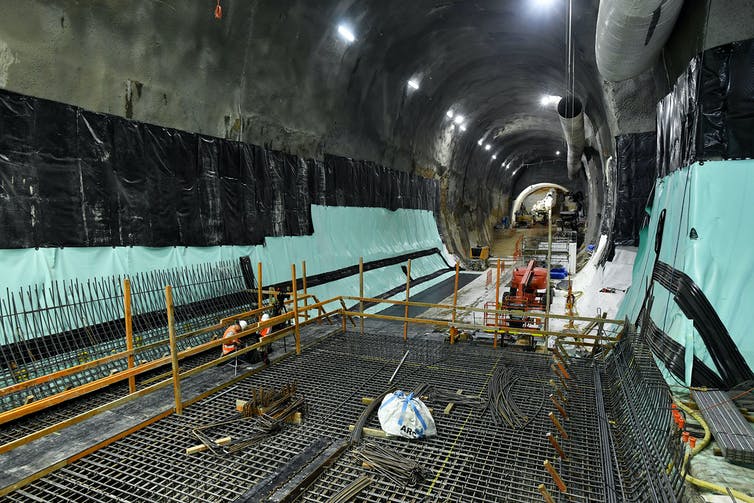Can a new department head get the politics out of infrastructure? (And is that a good idea anyway?)

Federal infrastructure policy has been rife with controversy for years: from the sports rorts scandal and dubious commuter car parks to overpriced land for the second Sydney airport. So notorious did the excesses become that they convinced the Morrison government’s critics to campaign for a strong anti-corruption commission during the May election.
Little wonder, then, that the Albanese government has brought in a new broom to head its infrastructure department.
Jim Betts replaces Simon Atkinson, a Morrison-appointed career bureaucrat who held the job through all those recent scandals. Like Atkinson, Betts is a long-time public servant, but he comes to the job straight from the state rather than federal bureaucracy.
Betts served first in Victoria’s Transport Department, where he was eventually secretary, then took the helm of Infrastructure New South Wales, and more recently headed the NSW Planning Department. So he takes on his new job with decades of experience in state infrastructure policymaking.
Where the action is
It is significant that Betts brings state rather than federal experience: infrastructure is a different kettle of fish at the state level. It is state governments that usually design, prioritise and build infrastructure projects. The federal government’s main role is to decide which projects to bankroll (the exceptions to this, like the National Broadband Network, don’t exactly shower the feds in glory).
Because of Australia’s chronic vertical fiscal imbalance, the states can rarely pay for the projects themselves: they are hopelessly reliant on the feds to turn their infrastructure fantasies into concrete reality, and compete desperately against one another for funds.
Read more:
Shovel-ready but not shovel-worthy: how COVID-19 infrastructure projects missed the opportunity to transform the way we live
Still, the infrastructure initiative normally lies with the states, and so that’s where much of the lobbying by vested interests and pressure groups takes place – and where the jockeying plays out between departments for their pet project to become the state’s submission for federal cash.
As my new study of Melbourne’s notorious East-West Link shows, this is the kind of politics Jim Betts knows intimately. At the helm of Victoria’s Transport Department for much of that saga, he saw how intense the politics of infrastructure can become.
Politics meets infrastructure: Victoria’s opposition leader, Matthew Guy (left), with the then prime minister, Tony Abbott (centre), after Labor’s scrapping of East-West Link. Guy went on to lose the next state election in a landslide.
Tracey Nearmy/AAP
Indeed, I suspect Betts’s long experience of state infrastructure policy might even incline him to accept the key finding of my book: that infrastructure is not afflicted by politics but is inherently and inescapably political.
Infrastructure necessarily involves public money, public space and visions of the public good. It is one of the more concrete ways citizens encounter public policy and one of the go-to yardsticks by which they judge the competence of a government. It is not something that can be administered scientifically or apolitically; there are no objectively right or wrong answers about what to build, just trade-offs and contested values.
When governments choose infrastructure priorities and build things, there are always winners and losers, there are always disputes, there are always votes on the line, and there are always competing visions being endorsed or crushed.
This means the mission of many reform enthusiasts – to “take the politics out of infrastructure” – is misguided. No independent authority or auditor has the power to do that, no matter how many priority lists they publish and no matter how much they name and shame governments for spending money in their own political interests.
Indeed, Betts would have seen during his time at Infrastructure New South Wales that such hopes are foolish. When the politics are compelling, governments will always ignore advisory bodies.
Behind closed doors
Betts’s experience across Victoria and NSW might help reform in another direction. When he worked in Victoria – from the 1990s until mid-2013 – the state had no long-term infrastructure plan, save for the Brumby Labor government’s attempt at a transport plan in 2009, which was quashed a year later by the Baillieu Coalition government.
Victoria still doesn’t have a proper long-term plan. Instead, it has ad-hocery writ large: billions upon billions spent on a “Big Build” program with no guiding logic. Projects frequently seem to come out of nowhere in surprise announcements, with all the lobbying and jockeying having occurred behind closed doors. The public tends to find out only once the sods are about to be turned.
Read more:
Victoria needs a big-picture transport plan that isn’t about winners v losers

According to plan? The new Martin Place metro station under construction in Sydney in 2019.
Joel Carrett/AAP
By contrast, NSW did have long-term plans when Betts worked there. Plenty of things in those plans were and still are bitterly contested, and many aspects of the state’s infrastructure governance have been deeply problematic. But at least plans have been out there for people to see and contest.
Public, long-term plans change things. The lobbying and pressuring and organising can’t hide in the shadows. The politicking is out in the public arena; the next project (and the next and the next) is at least out there in outline for all to see and debate.
Betts would have seen up-close the difference plans can make. And he could, in his new position, urge the federal government to make long-term plans a prerequisite for federal infrastructure dollars.
Transparency over denial
Requiring that states have good-quality, public, long-term infrastructure plans before they can expect federal funds would be a game-changer. Plans can’t cure all that ails Australian infrastructure policymaking – there are good plans and bad plans, democratic plans and plans that serve narrow interests. But they would be a good start.
Read more:
Will the population freeze allow our big cities to catch up on infrastructure?
Plans force governments to build a rationale not for this or that project but for a whole vision; they force governments to explain their trade-offs and assumptions; and they force governments to think beyond the next election. They articulate the goals being pursued and defend the choice of winners and losers. If they’re done well, they generate buy-in and legitimacy — things desperately lacking in many infrastructure undertakings these days.
Far from taking the politics out of infrastructure, good plans lay the politics of infrastructure bare.
That is the kind of change to infrastructure policy-as-usual we need to see in Australia: not attempts to deny or hide the politics, but an effort to be honest about it instead, and deal with it head-on.







